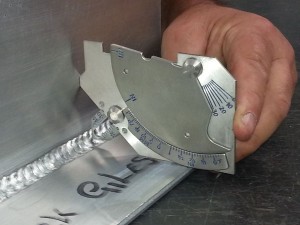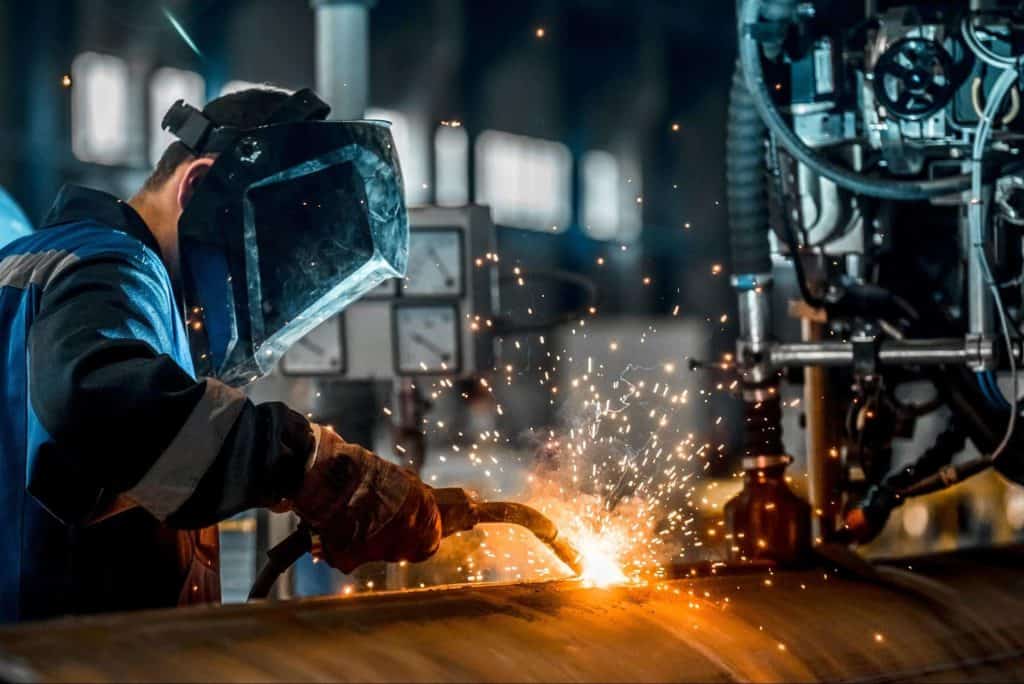How to Guarantee Quality with Welding Inspection Gilbert Arizona: Finest Practices
How to Guarantee Quality with Welding Inspection Gilbert Arizona: Finest Practices
Blog Article
Checking Out the Relevance of Welding Assessment in Industrial Applications: Safeguarding Against Failings and Enhancing Longevity
Welding examination functions as an essential line of defense in industrial applications, making sure the architectural stability and dependability of bonded components. By systematically determining issues such as porosity and insufficient combination, evaluations not only protect against failures however additionally expand the life-span of vital properties. Complying with industry standards improves both safety and security and functional performance; however, the ramifications of ignoring these practices can be severe. As we take a look at the diverse advantages of normal examinations, it comes to be evident that understanding these dynamics is not merely a matter of conformity yet a calculated crucial for durability and risk reduction (Welding Inspection Gilbert Arizona).
Function of Welding Inspection
Welding assessment functions as an important protect in industrial applications, guaranteeing that welded frameworks satisfy specified criteria of high quality and security. This procedure entails an organized assessment of welds to confirm their integrity, stamina, and compliance with established codes and requirements. The function of welding evaluation is complex, incorporating both aesthetic evaluations and non-destructive testing methods, which may consist of ultrasonic, radiographic, or magnetic bit testing.
Additionally, welding assessment plays an important duty in regulatory conformity. Many markets are governed by rigorous security criteria, necessitating detailed documentation and recognition of welding techniques. By preserving these documents, organizations can demonstrate adherence to security regulations, therefore cultivating count on among stakeholders and customers. Ultimately, the function of welding inspection is indispensable in advertising safety, improving efficiency, and shielding investments in industrial infrastructure.
Typical Welding Problems

Among one of the most widespread defects is porosity, defined by tiny gas pockets trapped within the weld steel. This takes place as a result of impurities or incorrect protecting gas, compromising the weld's stamina. An additional considerable defect is insufficient blend, where the weld steel fails to bond appropriately with the base material, potentially resulting in architectural weaknesses.
Splits can additionally develop throughout or after the welding procedure, commonly attributed to thermal stress and anxieties or inappropriate cooling rates. In addition, undercutting, where the base steel is worn down along the weld bead, can weaken the joint and is commonly caused by excessive heat input or wrong technique.
In addition, lack of infiltration takes place when the weld steel does not get to the root of the joint, leading to insufficient toughness. Comprehending these usual defects is important for welders and assessors alike to ensure that welded frameworks fulfill security and performance criteria, eventually preventing prospective failings in industrial applications.
Benefits of Normal Inspections
Routine inspections act as an essential secure in ensuring the dependability and long life of bonded structures. These analyses identify potential flaws and weak points that may jeopardize the stability of welds, permitting prompt remediation before problems intensify. By applying an organized evaluation routine, organizations can substantially lower the risk of devastating failures that might bring about costly downtime, devices substitute, and even crashes.
Moreover, regular evaluations add to enhanced high quality control throughout the welding process. By sticking to a constant assessment timetable, firms can guarantee that their welding methods meet well established top quality criteria and ideal techniques. This not just cultivates a culture of responsibility however additionally motivates continuous renovation among welding workers.
On top of that, routine examinations help with far better maintenance planning. By identifying wear and tear early, companies can strategically set up replacements and repair work, minimizing disturbance to operations. This proactive approach eventually results in extensive possession lifespan and enhanced total efficiency.
Lastly, a dedication to regular examinations can improve a company's online reputation in the sector. Customers and stakeholders increasingly worth organizations that prioritize safety and security and quality, therefore improving depend on and potentially causing increased service possibilities.
Market Standards and Laws
Following industry requirements and laws is a fundamental facet of welding inspection that matches the benefits of routine examinations. These criteria, established by organizations such as the American Welding Culture (AWS) and the American Society of Mechanical Engineers (ASME), supply a structure for best techniques in welding processes, materials, and examination strategies. Compliance with these policies makes sure that welds fulfill the required high quality and safety and security standards, considerably lowering the threat of architectural failures.
Governing bodies like the Occupational Safety and Health And Wellness Management (OSHA) better apply standards that protect her comment is here workers and the environment during welding operations. By complying with these established requirements, markets can improve the dependability of their structures and components, guaranteeing they perform as intended under various functional problems.
Moreover, adherence to sector standards fosters consistency in quality assurance, helping with smoother communication amongst stakeholders and regulative firms. This positioning not only reduces liability risks yet additionally improves the credibility of companies in affordable markets. Eventually, compliance with welding standards and guidelines is not simply a legal commitment; it is an essential financial investment in security, performance, and lasting functional success.
Future Trends in Welding Assessment
As markets remain to advance, the future of welding assessment is poised to incorporate sophisticated modern technologies that enhance accuracy and effectiveness. Among one of the most considerable patterns is the adoption of automation and robotics in inspection procedures. Automated systems can carry out inspections swiftly, minimizing human error and raising throughput in producing environments.
In addition, the combination of expert system (AI) and machine discovering algorithms will certainly enable predictive analytics, permitting real-time evaluations and aggressive maintenance (Welding Inspection Gilbert Arizona). By examining information from previous examinations, these innovations can recognize patterns that can suggest potential failings, thereby prolonging the life-span of welded elements

Moreover, the fad towards digitalization will cause boosted data administration systems that promote far better tracking, reporting, and compliance with industry requirements. In recap, the future of welding assessment is identified by technological developments that guarantee to substantially boost integrity, safety and security, and functional performance in various industrial applications.
Conclusion
In conclusion, welding evaluation offers a crucial function in ensuring the honesty and toughness of welded frameworks across numerous commercial applications. As improvements in technology proceed to develop, the future of welding inspection assures increased accuracy and performance, eventually adding to the durability of crucial frameworks.
Welding examination serves as a crucial line of protection in industrial applications, making certain the my explanation structural stability and reliability of welded parts.Welding examination offers as a crucial guard in industrial applications, making certain that welded frameworks meet defined requirements of top quality and security - Welding Inspection Gilbert Arizona. Inevitably, the role of welding assessment is essential in promoting safety and security, enhancing efficiency, and protecting investments in commercial infrastructure
These standards, developed by companies such as the American Welding Society (AWS) and the American Society of Mechanical Designers (ASME), offer a structure for ideal practices in welding processes, products, and examination techniques.In final thought, welding inspection serves a crucial feature in making certain the integrity and toughness of bonded frameworks across various commercial applications.
Report this page